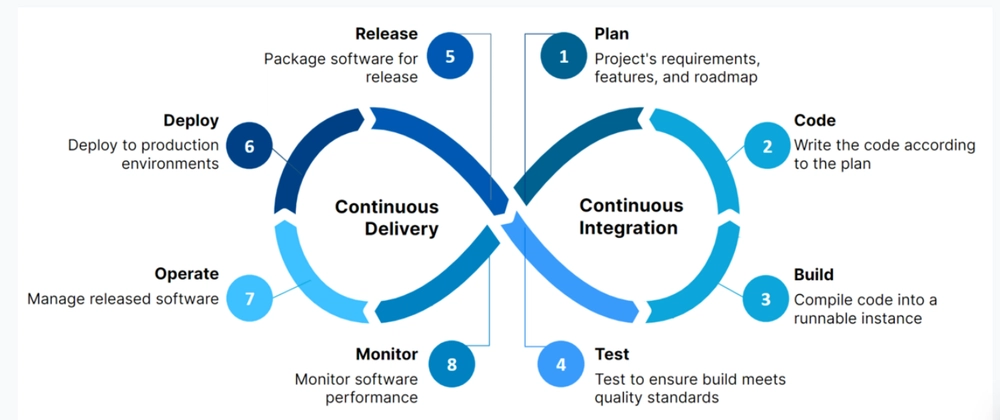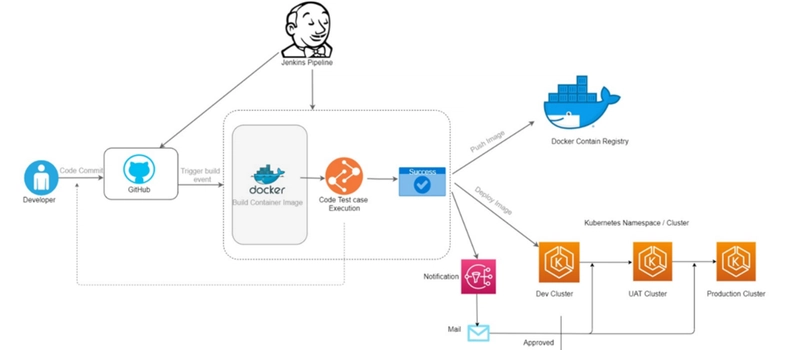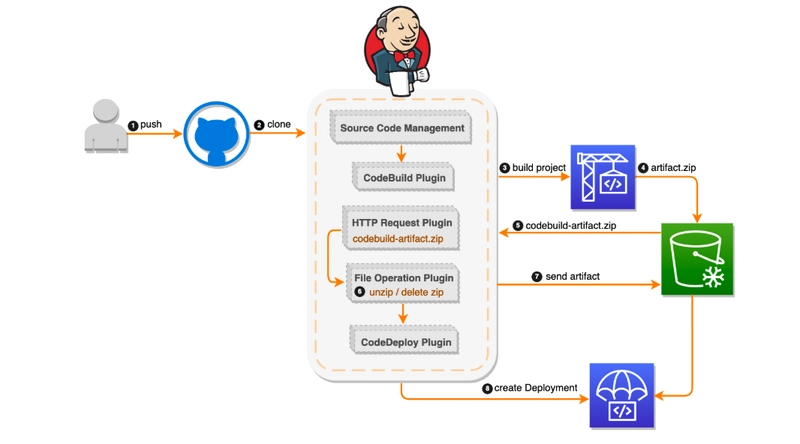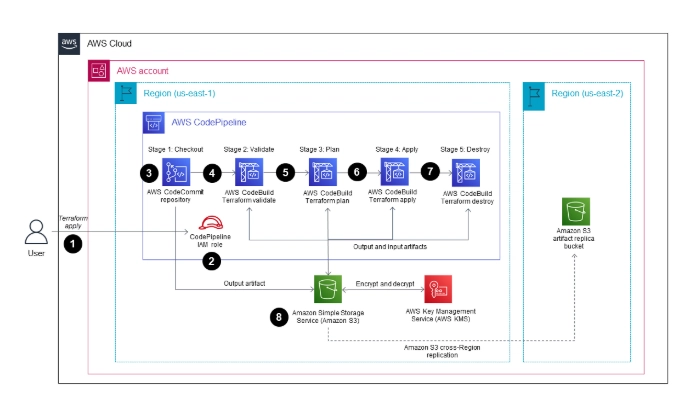In today's fast-paced software development environment, continuous integration and continuous deployment (CI/CD) pipelines are vital for delivering high-quality applications efficiently. Integrating containerization into these pipelines enhances scalability, consistency, and deployment speed. This article explores designing CI/CD pipelines with container builds and deployments, implementing automated testing strategies for containers, and managing infrastructure using Infrastructure as Code (IaC) tools like Terraform and AWS CloudFormation.
Pipeline Architecture: Integrating Container Builds and Deployments
Image source[https://www.cloud-kinetics.com/blog/enabling-ci-cd-pipeline-for-container-based-workloads/]
A well-structured CI/CD pipeline automates code integration, application building, testing, and deployment to production environments. Incorporating containers ensures applications run consistently across different settings. Here's how to integrate containerization into CI/CD pipelines using popular tools:
Jenkins: An open-source automation server that facilitates building, testing, and deploying applications. Integrating Jenkins with Docker automates the creation of Docker images and their deployment to container orchestration platforms. Combining Jenkins with AWS services like CodeBuild and CodeDeploy can enhance your CI/CD pipeline.
GitLab CI: GitLab's built-in CI/CD capabilities seamlessly integrate with containerization technologies. By defining CI/CD pipelines in the .gitlab-ci.yml file, you can automate the building, testing, and deployment of containerized applications. GitLab also provides Docker images with the necessary libraries and tools to deploy to AWS, streamlining the process.
AWS CodePipeline: A fully managed CI/CD service that automates the build, test, and deploy phases of your release process. Integrating with AWS services like CodeBuild (for building Docker images) and CodeDeploy (for deploying applications), CodePipeline enables the automation of containerized application deployments.
Diagram: Example of a CI/CD pipeline integrating container builds and deployments using Jenkins and AWS services.
Image Source [(https://aws.amazon.com/blogs/devops/setting-up-a-ci-cd-pipeline-by-integrating-jenkins-with-aws-codebuild-and-aws-codedeploy/)]
Automated Testing Strategies for Containers
Ensuring the reliability of containerized applications requires robust automated testing strategies:
Unit Testing: Focuses on individual components to ensure they function correctly in isolation. Incorporating unit tests into the CI/CD pipeline helps catch issues early in development.
Integration Testing: Validates interactions between different components or services. For containerized applications, this involves testing communication between containers to ensure they work together as intended.
End-to-End Testing: Simulates real user scenarios to verify the entire application stack functions correctly. Containerization facilitates the replication of production-like environments for comprehensive end-to-end testing.
Implementing these testing strategies within the CI/CD pipeline ensures thorough vetting of code changes before reaching production, enhancing application stability and reliability.
Infrastructure as Code (IaC): Managing Infrastructure with Terraform and AWS CloudFormation
IaC involves managing and provisioning infrastructure through machine-readable definition files, promoting consistency, repeatability, and automation.
Terraform: An open-source IaC tool that allows defining and provisioning infrastructure using a declarative configuration language. Terraform supports various cloud providers, enabling the management of diverse infrastructure resources. Implementing CI/CD pipelines with Terraform involves using testing frameworks to perform unit and integration tests on Terraform modules, ensuring infrastructure changes do not introduce errors.
AWS CloudFormation: A service that provides an easy way to create a collection of related AWS and third-party resources, and provision and manage them in an orderly and predictable fashion. Using CloudFormation templates, you can define the desired state of your infrastructure and automate its provisioning and updates. Incorporating CloudFormation into your CI/CD pipeline allows for automated testing and validation of infrastructure changes, promoting a test-driven development approach to infrastructure management.
Diagram: Workflow illustrating Infrastructure as Code using Terraform and AWS CloudFormation within a CI/CD pipeline.
By integrating containerization into CI/CD pipelines, implementing comprehensive automated testing strategies, and adopting IaC practices with tools like Terraform and AWS CloudFormation, DevOps professionals can significantly enhance the efficiency, reliability, and scalability of software delivery processes.






Top comments (0)